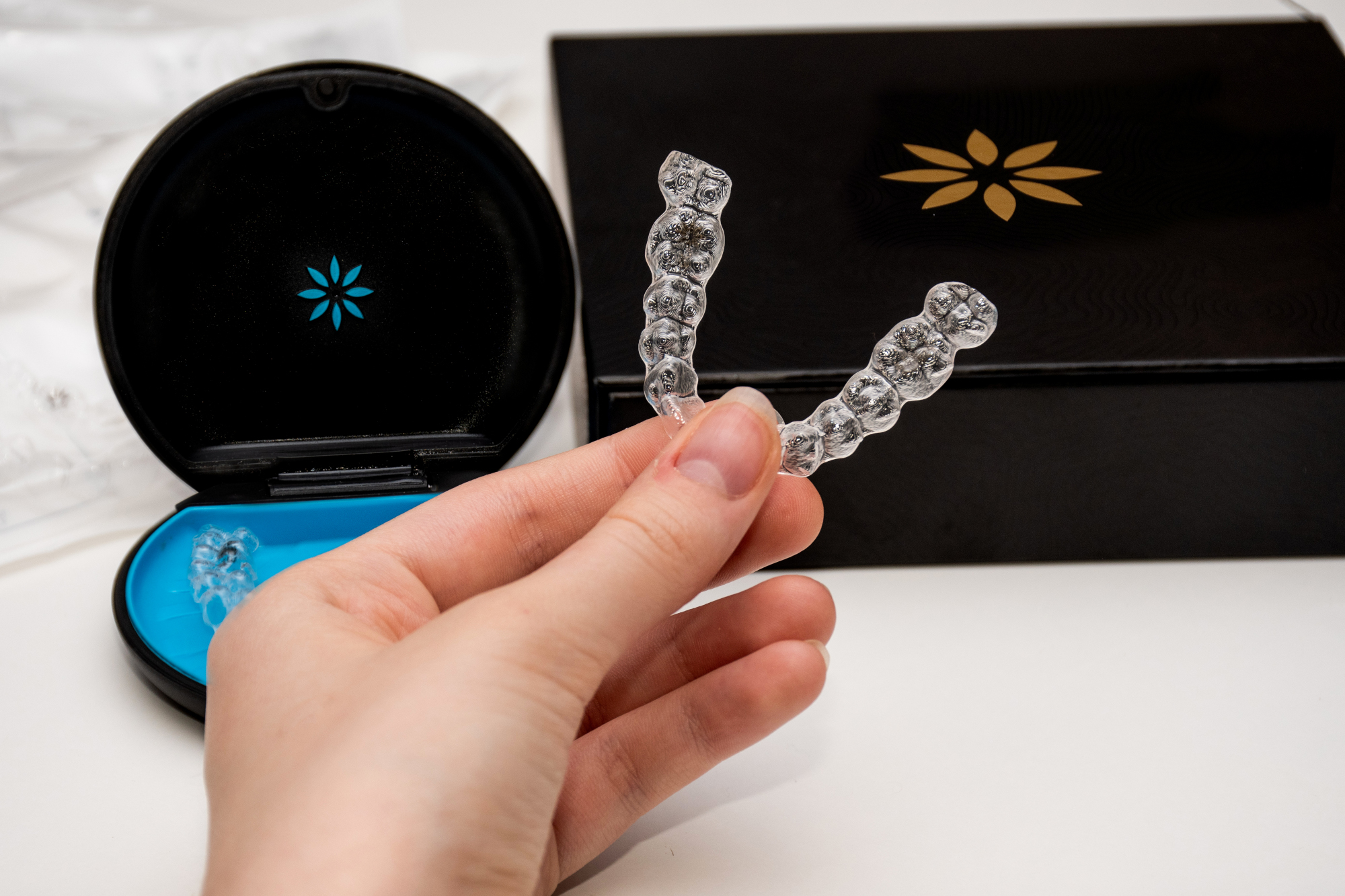An Introduction to the Invisalign System: How Clear Aligners Work
The era when orthodontic treatment was synonymous with a metallic smile is officially over. Today, the desire for discreet solutions is at an all-time high, particularly among adults. The most renowned and sought-after of these solutions is the Invisalign system. Let’s explore what it is and its mechanism of action.
How Does the Invisalign Treatment System Function?
The Invisalign system is a pioneering orthodontic method that aligns teeth without the use of conventional braces. Instead, it utilizes a series of custom-engineered, transparent plastic aligners. Each set of these aligners is worn for a period of one to two weeks, where it applies gentle, controlled forces to systematically guide your teeth into their proper alignment. This entire step-by-step sequence is precisely designed by your provider with the aid of sophisticated 3D imaging software.
What Differentiates Invisalign from Other Orthodontic Appliances?
Invisalign distinguishes itself from other orthodontic treatments through its unparalleled blend of clinical effectiveness and lifestyle convenience.
Invisalign vs. Traditional & Ceramic Braces
The most apparent distinction lies in aesthetics. Invisalign aligners are practically invisible, while traditional metal braces—or even their ceramic counterparts—feature noticeable brackets and wires. The most fundamental difference, however, is that Invisalign aligners are removable. This allows you to take them out for meals, brushing, and flossing, providing a degree of freedom and oral hygiene that fixed appliances simply cannot offer. You can explore this further in our comprehensive Invisalign vs. Braces breakdown.
Invisalign vs. Lingual Braces
Lingual braces are another "invisible" orthodontic option where brackets are bonded to the back (lingual side) of the teeth. Although they are the only truly 100% concealed solution, they come with significant compromises. Lingual braces are known to cause considerable tongue irritation and speech impediments initially, and keeping them clean is a significant challenge. For daily life, Invisalign is broadly regarded as the more comfortable and practical choice.
Quick Comparison: Invisalign vs. Lingual Braces
Here is a brief summary to highlight the key distinctions:
- Aesthetics: Advantage: Lingual Braces (perfectly hidden). However, Invisalign is a very strong competitor (nearly invisible).
- Daily Comfort: Advantage: Invisalign (smooth plastic, removable, no irritation).
- Hygiene & Diet: Major Advantage: Invisalign (appliance is removed for eating and cleaning).
- Discipline Required: Advantage: Lingual Braces (fixed appliance, no risk of forgetting). Invisalign's success depends on the patient's commitment to wearing it 22 hours daily.
- Cost: Advantage: Invisalign, which is typically more affordable than fully customized lingual appliances. Find out more in our guide to Invisalign pricing.
Conclusion: Making the Right Choice
Deciding between Invisalign and alternative treatments ultimately depends on your personal priorities. If absolute, total concealment is your primary goal and cost is not a limiting factor, lingual braces could be a consideration. Conversely, if you place a higher value on comfort, convenience, hygiene, and a more manageable cost, Invisalign is very likely the superior option for you.
In all scenarios, only a certified orthodontic provider can, after conducting a thorough assessment, give you professional advice on the most appropriate solution for your specific dental needs and personal goals.
Ready to start your Invisalign journey?
Find a certified Invisalign provider near you using our interactive map of orthodontists in the US.
Find a Provider
